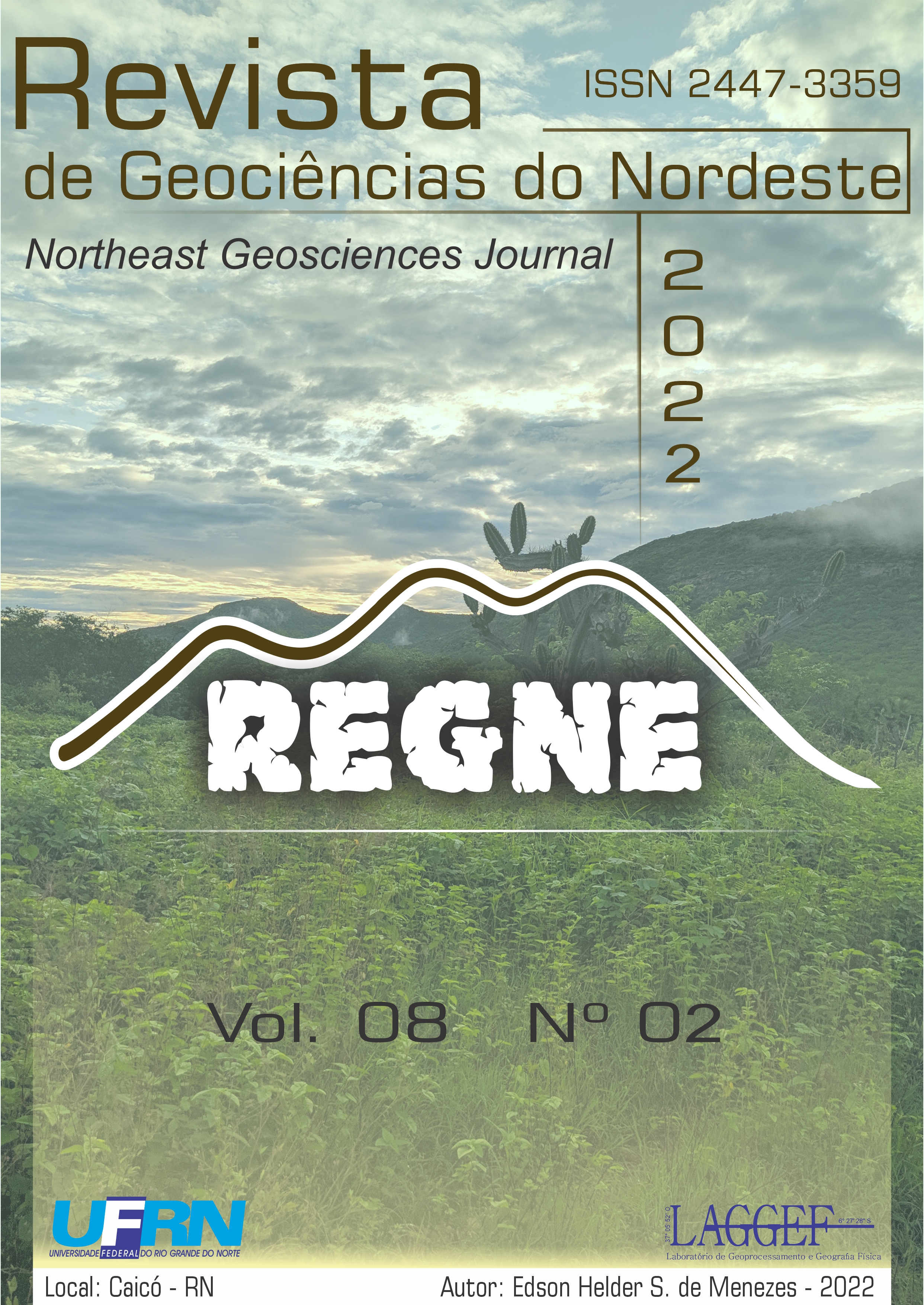Soils of the tablelands of the Recôncavo Baiano (Brazil)
DOI:
https://doi.org/10.21680/2447-3359.2022v8n2ID28987Abstract
The process of transformation of the Yellow Latosoil - Spodosoils with high contents of organic matter were the subject of this study. They developed on the Barreiras Group sediments, in a Recôncavo Baiano tablelands located in Santo Amaro county, Brazil. The starting point was the toposequencial soils analysis which were characterized regarding the morphology, micromorphology and physical, chemical and mineralogical attributes. The pedological system is complex, showing depressions related to faults and/or fractures crossing that indicate the neotectonism how started process of transformation. The relationships between the oxic and the hidromorphic domain point to Latosoil transformations linked to conditions of cyclic hydric saturation and to the action of organic composites of low molecular weight. The high contents of organic matter accumulated by reduction of mineralization under acids conditions and temporary anaerobiose propitiate the evolution of humus with the formation of mobile organic composites and acids which act on the transformation of the Latosol, through the installation of processes of podzolisation with partial acidolysis, acting from downstream to upstream in the versant. On the pedogeochemical aspect the destruction of primary minerals and the disorganization of the secondaries, indicate a route predominantly organic in the transformation, process, under the influence of reducing environments.
Downloads
Published
How to Cite
Issue
Section
License
Copyright (c) 2022 Revista de Geociências do Nordeste

This work is licensed under a Creative Commons Attribution 4.0 International License.


 Português (Brasil)
Português (Brasil) English
English







